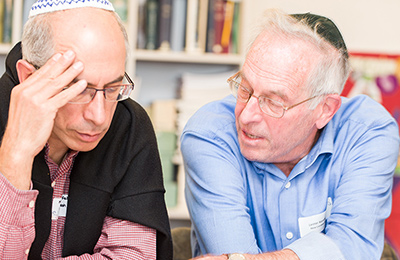Tetzaveh

Without an interest in fashion, food or furniture you’d be forgiven for dismissing this sedra as one of those tedious tracts describing long disused rituals. Details of the priestly vestments and preparation of the sacrifices seem a long way from anything relevant to us today.
But wait! What’s that in chapter 28 verse 30? What are the Urim and Thummim, and how are these two items, literally translated as Lights and Perfections, put into the breastplate, and for what purpose?
The beautifully jewelled breastplate of judgement or decision seems to be the medium through which Aaron communicates with the Almighty, and the Urim v’Thummim inserted therein are the means by which divine judgement is understood. We cannot speak to or hear from God except through this strange intermediary.
“…and they shall be upon Aaron’s heart, when he goeth in before the Lord; and Aaron shall bear the judgement of the children of Israel upon his heart before the Lord continually.”
Curiously, the Urim v’Thummim are not mentioned in Pekudei, which we read in a few weeks time, where the description of the priestly clothes is otherwise repeated almost exactly.
Other biblical passages shed a little more light on the Urim v’Thummim, indicating that they were oracles that might be consulted for guidance. The Book of Hosea (8th century BCE) provides the earliest references, where they are described as being used for divination, in particular for the allocation of land. In the Talmud (Berachot 3b) there is a passage stating that King David would ask a question of the Urim v’Thummim regarding the outcome of a war he might be thinking about waging. The Talmud makes no further reference to them.
Very little is known about what they looked like or were made of, and information as to their use is unclear beyond the notion that they were part of an elaborate ritual somewhat akin to the “sorting hat” from the Harry Potter stories. One theory as to how the Urim v’Thummim worked is that they sequentially illuminated certain letters engraved on the jewels (the names of the tribes) in order to spell out the answers to questions posed (Yoma 73b).
What of the origins of this strange ritual? Many scholars believe that rather than the Israelites invading Canaan, they were actually a people that emerged from the wider Canaanite society, and this would be consistent with the suggestion that the Urim v’Thummim are the same as the “Tablets of Destiny” widely written about in Assyrian texts.
These aspects of the Bible that deal with ritual purity and God’s power are key themes dealt with by the so-called Priestly source, compiled over a period of roughly one hundred years starting shortly after the destruction of the First Temple in 587BCE. The Urim v’Thummim combine both, emphasising how God’s power is expressed through the priestly rituals. With no temple, Judaism was vulnerable, and the focus on ritual observance and God’s might was crucially important for our survival as a people. It would therefore not be surprising for the idea of the Tablets of Destiny to be adapted by the Israelites at this point in our history.
Nick Gendler is a member of New North London Synagogue and former Co-chair of Masorti Judaism.




